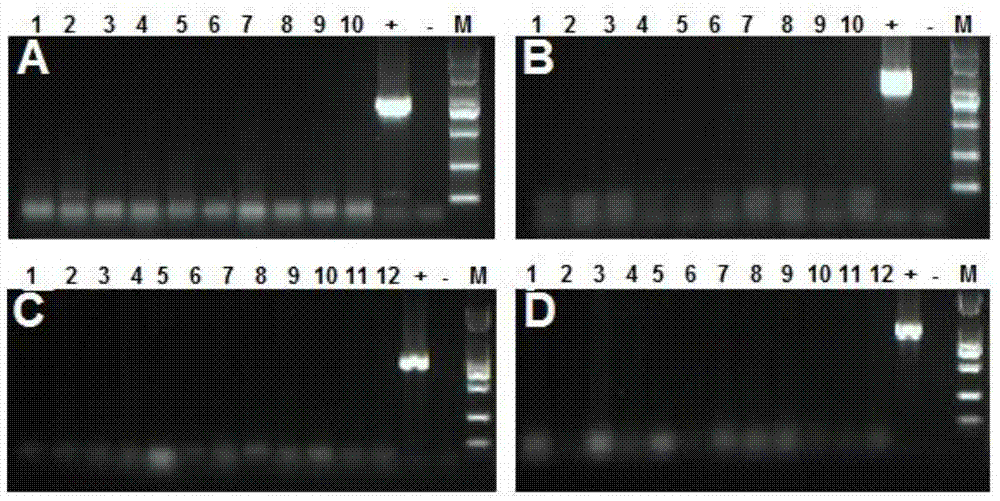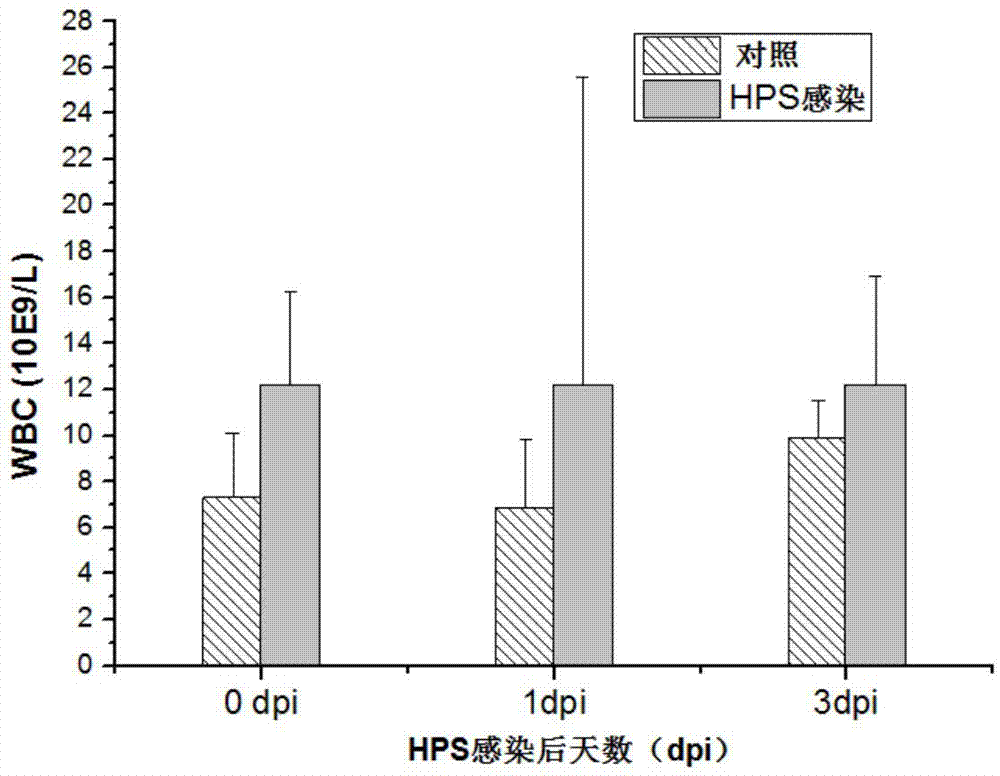Method for building model of piglets infected by haemophilus parasuis (HPS)
A technology of Haemophilus suis and construction method, applied in the field of animal model construction, can solve the problems of low accuracy, not conforming to animal welfare, and increasing experimental cost, etc.
- Summary
- Abstract
- Description
- Claims
- Application Information
AI Technical Summary
Problems solved by technology
Method used
Image
Examples
Embodiment 1
[0074] Embodiment 1, select Tongcheng pig (my country domestic purebred pig) as experimental pig
[0075] Step 101: After isolating a number of Tongcheng CD piglets obtained from natural parturition by sows, put them into a sterile incubator with a temperature of 35°C. After the Tongcheng CD piglets are dry on the body surface and stand stably or walk freely in the incubator , using a feeding bottle to feed 40ml of warm water at a temperature of 37°C, and within 3 hours after birth, transfer the Tongcheng CD piglets to a nursery pen with a negative pressure condition and a large ambient temperature of 28°C.
[0076] Step 102: This step is the same as step S2. Under the feeding conditions of this embodiment, the survival rate of Tongcheng CD piglets is 80%.
[0077] Step 103 : Divide the undead CD piglets into two groups at random: infection group A and control group B. All CD piglets in infected group A and control group B were grown to 35 days of age, and nasal swabs and non...
Embodiment 2
[0112] Embodiment 2, select Du grow up ternary hybrid pig as experimental pig
[0113]Step 201: After isolating a number of Du-Chang ternary CD piglets obtained by natural parturition of the sow, put them into a sterile incubator with a temperature of 33°C, and wait until the surface of the Tongcheng CD piglets is dry and the incubator is stable or stable. After walking freely, use a feeding bottle to feed 40 ml of warm water at a temperature of 37 °C. Within 5 hours after birth, transfer Tongcheng CD piglets to a nursery pen with a negative pressure and a temperature of 35 °C.
[0114] Step 202: This step is the same as step S2. Under the feeding conditions of this embodiment, the survival rate of the Duchang-Changsan-yuan CD piglets is 85%.
[0115] Step 203 : Divide the undead CD piglets into two groups at random: infection group A and control group B. All CD piglets in infected group A and control group B were grown to 30 days of age, and nasal swabs and non-anticoagulate...
Embodiment 3
[0122] Embodiment 3 comparative example, choose Du grow up ternary CD piglet
[0123] Step 301: This step is the same as step 201.
[0124] Step 302 : This step is the same as step S2, and the survival rate of Du Changchang ternary CD piglets is 83%.
[0125] Step 303: In this step, other processing methods are the same as in step 203, except that the collection time is 40 days and the CD piglets infected with the APP pathogen are retained.
[0126] see figure 1 As shown in the figure, C in the figure is the identification result of HPS in nasal swabs of 12 of them (swimming lanes 1-12) Dulong-Chang ternary CD piglets. The PCR amplification product of the HPS-specific gene is 821bp, and the last three swimming lanes are in turn HPS positive control, negative control and Marker band (standard molecular weight, DL2000).
[0127] figure 1 In D, bands 1 to 12 are the identification results of HPS in the nasal swabs of any 12 Du-long ternary CD piglets, the PCR amplification pr...
PUM
 Login to View More
Login to View More Abstract
Description
Claims
Application Information
 Login to View More
Login to View More - R&D
- Intellectual Property
- Life Sciences
- Materials
- Tech Scout
- Unparalleled Data Quality
- Higher Quality Content
- 60% Fewer Hallucinations
Browse by: Latest US Patents, China's latest patents, Technical Efficacy Thesaurus, Application Domain, Technology Topic, Popular Technical Reports.
© 2025 PatSnap. All rights reserved.Legal|Privacy policy|Modern Slavery Act Transparency Statement|Sitemap|About US| Contact US: help@patsnap.com



